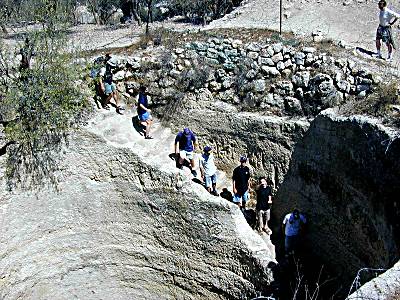According to 2 Sam. 2-13, they “met together by the pool of Gibeon.” Beneath a field of tomatoes in el-Jib, as the place is now called, Professor J. B. Pritchard, of Columbia University, discovered the “Pool of Gibeon,” apparently in its day a well known spot. He found a circular shaft, over thirty feet in diameter and thirty feet deep, which had been driven vertically into bed rock. A spiral path led down a ramp cut into the inside wall. Below that a winding staircase, with two openings for light and air, descended for a further forty-five feet to the reservoir itself, chiselled out of solid limestone. When the rubble which covered the whole lay-out had been cleared away, the great cistern began to fill slowly again with water from the fissures in the rock as it had done 3,000 years ago. This Biblical “Pool of Gibeon” had also provided the town with an ample supply of fresh drinking water during an emergency or in time of siege.
Werner Keller. The Bible as History. Bantam Books. New York. 1982. p.196.
